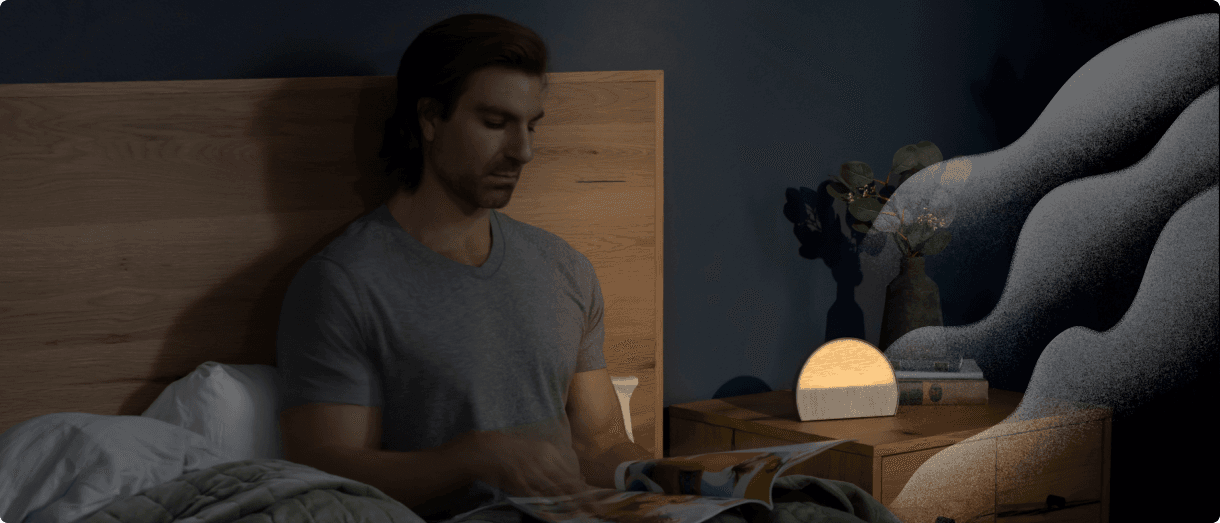How To Use Your Hatch Device’s Sounds To Help You Optimize Your Day
Your five senses help your brain interpret your surroundings so your body can respond accordingly. Much of this context-setting happens in the background, but you can also use sensory input intentionally to cue your brain and body to rev up or relax. Sound is one of the most powerful ways to create these cues.
Ever wonder why certain noises put you on edge, while others practically put you to sleep? The human body evolved to react differently to certain types of sound. For example, the high-frequency sound of a screaming baby prompts you to take action, while the gentle whoosh of a waterfall is conducive to rest and relaxation.
You may not be able to control all the ambient background noise around you each day, but you can take steps to create a more soothing or focused environment at home or work. There are lots of simple ways you can use the sound features on your Hatch product to create routines that support your well-being, any time of day or night.
Waking up in the morning
How you wake up can set the tone for your day, and a loud, high-frequency alarm might feel grating. Instead, choose a sound that’s cheerful enough to rouse you from slumber, but gentle enough not to put you on edge, says Jade Wu, Ph.D., a behavioral sleep psychologist, researcher at Duke University School of Medicine, and Hatch medical advisor.
To nudge your body awake gently, Dr. Wu recommends setting your Hatch device’s sunrise alarm to a more natural sound, such as singing birds. “In nature, birds start chirping more and more as the sun comes up, which feels like a more natural start to the day,” she says.

Calming down during the day
Nature sounds are also a great way to relax during the day. A soothing waterfall sound, for example, can provide an audio backdrop for a visualization meditation when you’re stressed at work. Or, you can turn on a crackling fire sound while you work or study to create a cozier, more relaxing vibe.
Pay attention to how your body feels when a particular sound is playing — you should feel relaxed and at ease rather than overly alert or agitated.
Concentrating on work or school
According to Dr. Wu, sound is often used to help your body relax. But your Hatch device’s noise features — white, brown, or pink noise, for example — can also help drown out distracting ambient noise that keeps you from concentrating on work or school.
Colored noises are engineered with various frequencies at different volumes. As a rule, it may help to choose high-frequency colors such as white to drown out high-frequency sounds, like a baby crying or cars honking. Low-frequency noises like pink or brown do a better job of blocking out low-frequency sounds, such as thumping bass or footsteps.
Getting ready for bed
When it’s getting close to bedtime, you can use sound to help your body wind down for rest. Whatever feels relaxing to you is the best choice, but soothing sounds like leaves rustling, a crackling fire, or ocean waves may help signal to your body it’s time to cozy up and wind down.
If your mind tends to get noisy before bed, Dr. Wu suggests playing a new channel from the Hatch+ premium content suite called “Pillow Talk.” Pillow Talk takes the entertaining topics we love from our favorite TV shows -- true crime, comedy, relationships, and more -- and offers them without the blue light of TV.
“The stories aren’t so stimulating that they’ll keep you awake, but they’re interesting enough to get your attention so you’re not thinking about your own troubles,” she says.

Sleeping
Which sounds you play for sleep depends on your own personal preference and surroundings. You may like to play relaxing sounds all night, or you might want to turn on your favorite colored noise to block out background sounds that keep you awake. In either case, don’t forget to set both a wind-down and wake-up routine using your Hatch app so you can fall asleep and wake up on your own, relaxing terms.